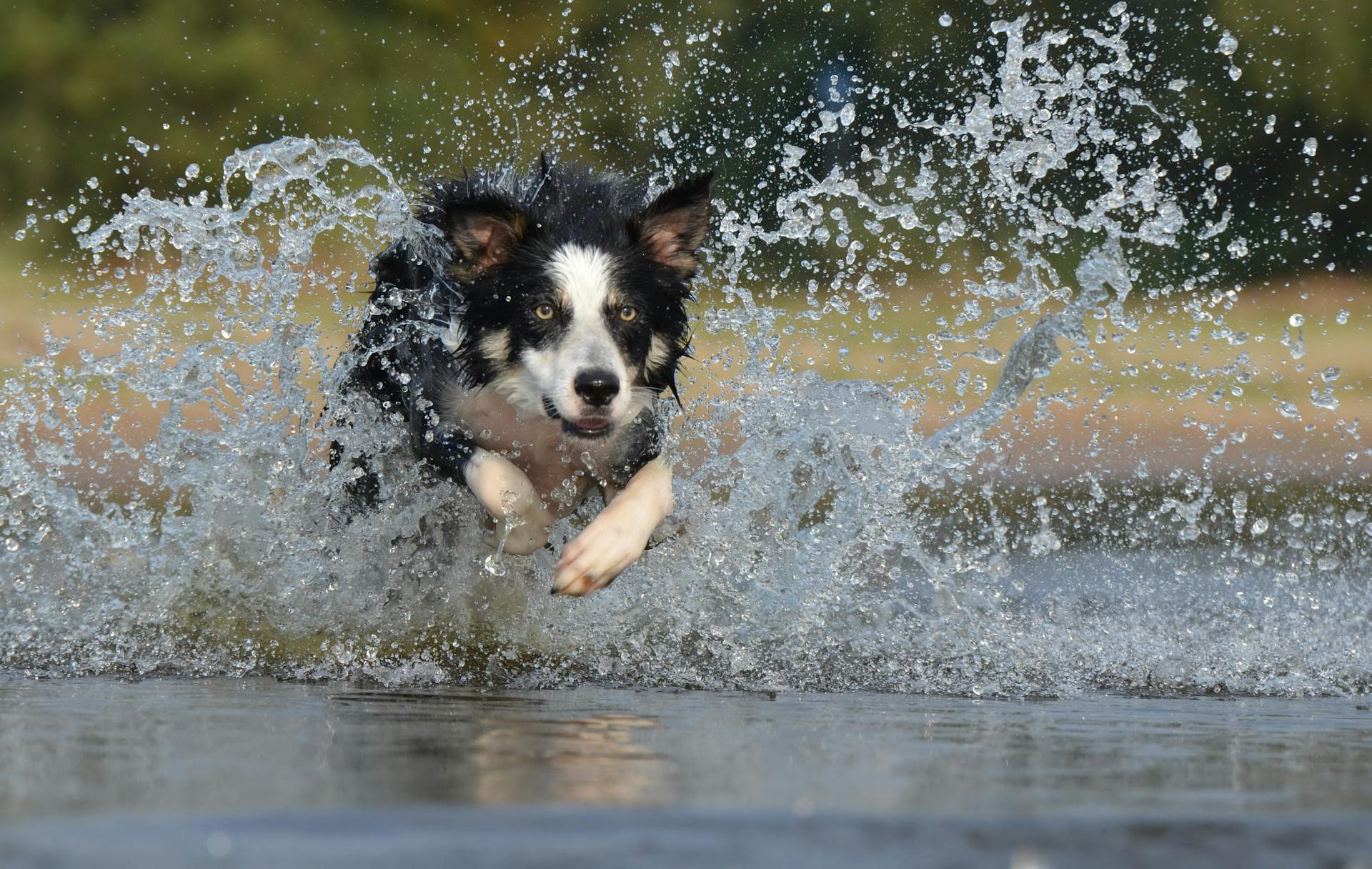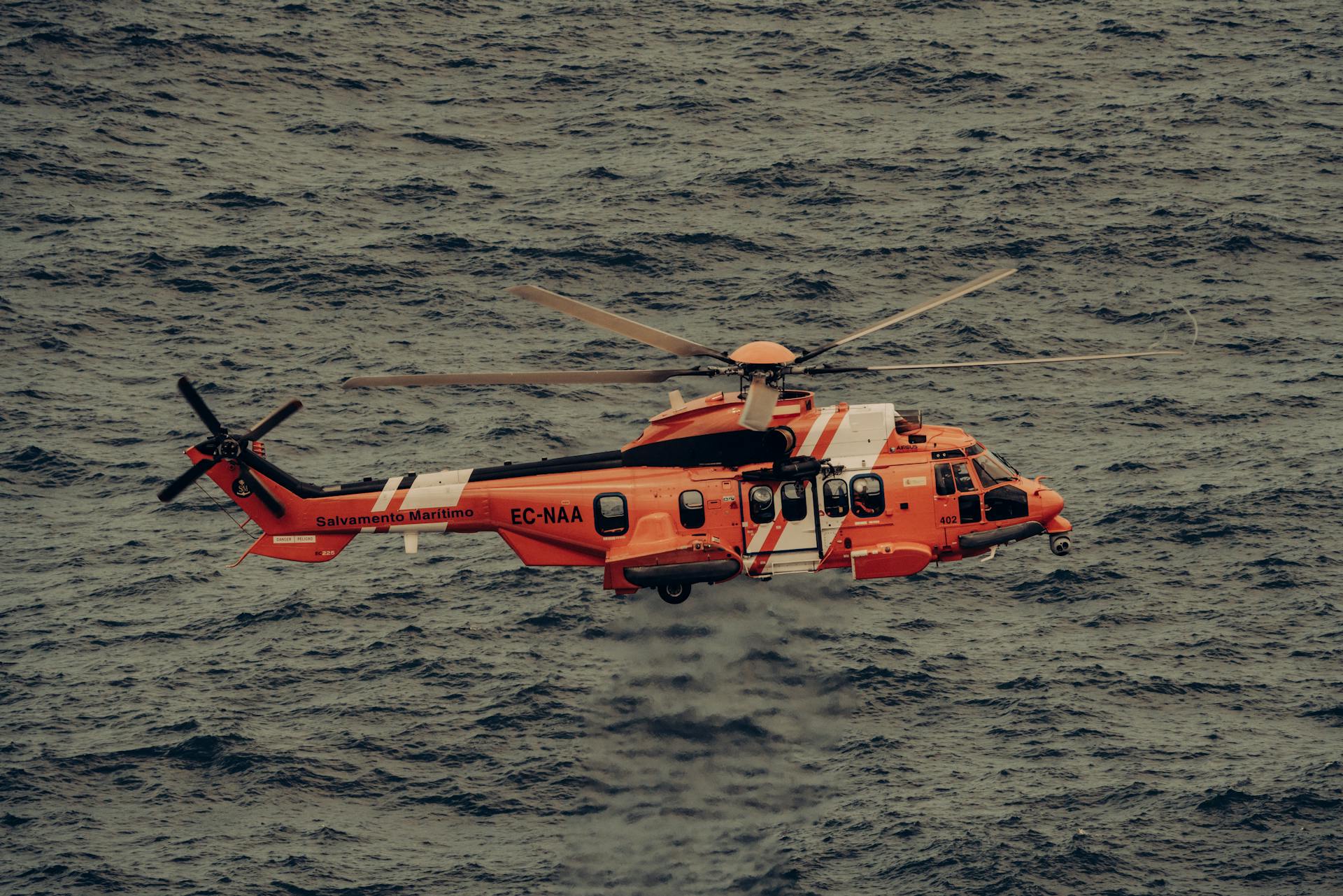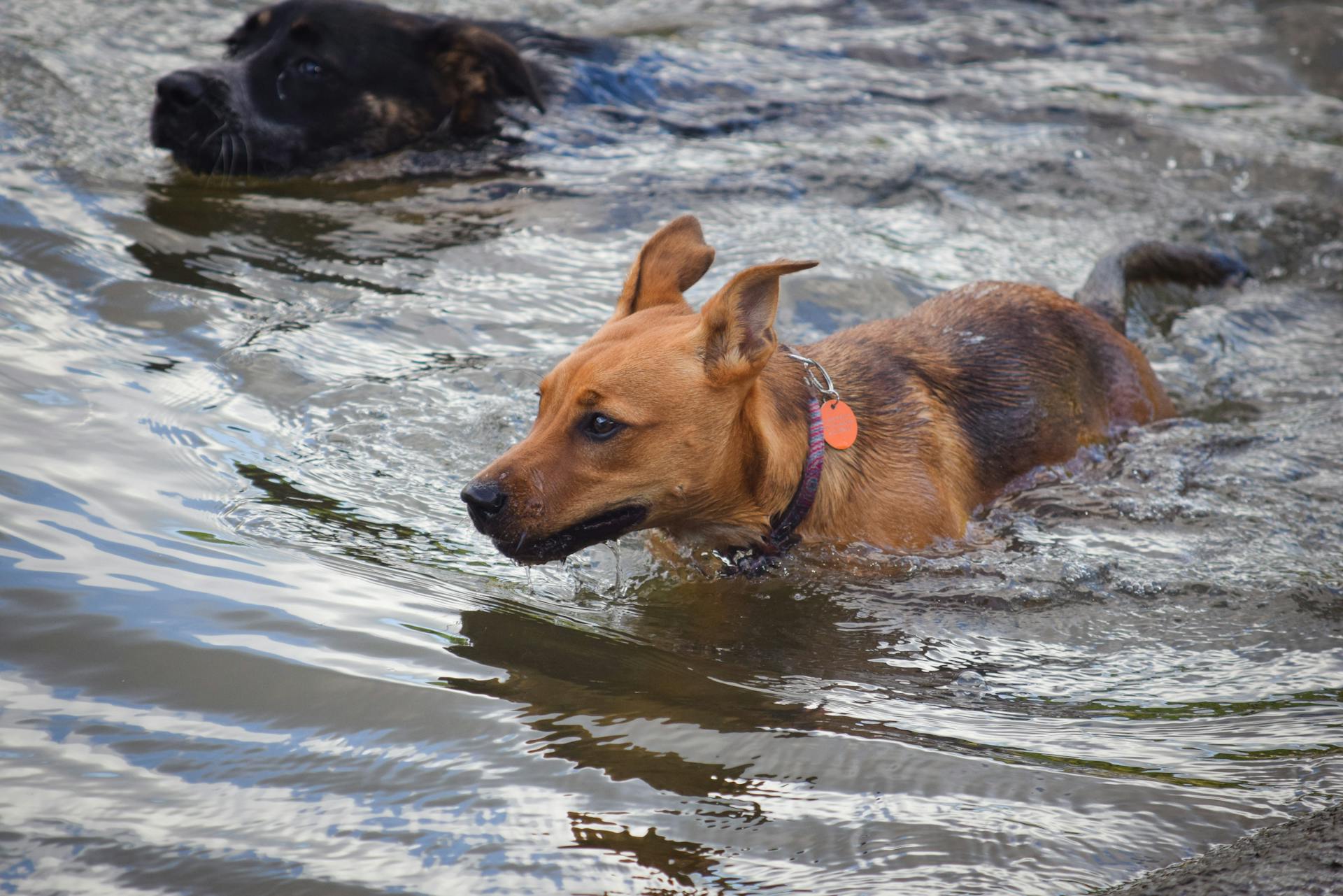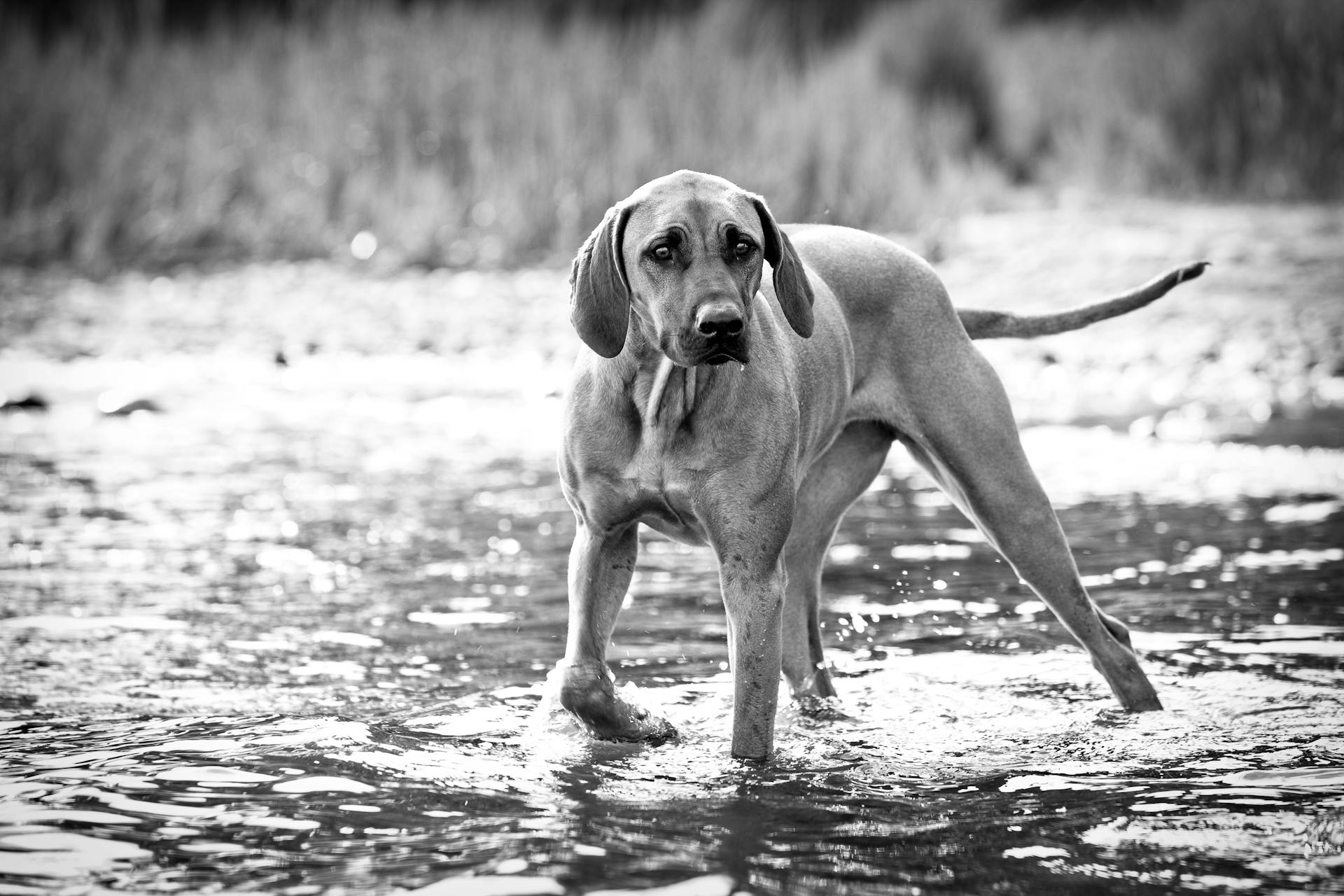
Water rescue dogs are incredibly skilled at saving lives in emergency situations. These dogs have undergone extensive training to detect distress signals, locate missing people, and even retrieve bodies from water.
Their keen sense of smell allows them to track scents in water that would be invisible to humans. This ability is crucial in finding missing people, especially in situations where other rescue methods have failed.
Water rescue dogs can swim for miles, often in challenging conditions, to reach their targets. Their endurance and strength make them invaluable assets in search and rescue operations.
Their training also includes learning to navigate through strong currents and rough waters, allowing them to reach areas that would be inaccessible to humans.
What They Do
Water rescue dogs are trained to save people from trouble in the water. They undergo basic obedience training to ensure they respond reliably to commands from their handlers.
Their strong and confident swimming abilities allow them to enter the water from various points, such as boats or docks, and navigate through different water conditions. They can handle rough currents, waves, and obstacles during rescue operations.

Water rescue dogs use scent detection and specific swimming patterns to search large areas quickly and effectively. They can cover a lot of ground in the water, making them valuable assets in rescue situations.
Once they find a person in distress, they'll assist by towing them back to land, providing rescue aids like a lifejacket or rope, or even serving as a floatation device until help arrives. This can be a lifesaver in emergency situations.
Water rescue dogs are often large, powerful breeds, such as Newfoundlands, capable of withstanding dangerous conditions and hazardous conditions. They must be fearless and possess excellent endurance to perform their job.
These incredible rescue workers often wear a specialized harness that provides extra floatation. The harness usually has handles or attachments for tow lines or rescue gear.
For more insights, see: Large Mountain Dogs
Types and Breeds
Water rescue dogs are incredibly skilled and versatile, with different types of dogs trained for various tasks.
Water search-and-rescue dogs are trained to locate missing persons or objects in water environments using their exceptional scent-detection abilities. They can even detect human scent when submerged underwater.
Lifesaving dogs, on the other hand, provide immediate assistance and rescue to individuals in water emergencies, and are proficient swimmers who excel at retrieving and towing people in distress back to safety.
Recovery dogs locate and recover bodies or evidence submerged in water, utilizing their scent-detection skills to find a specific target.
Avalanche rescue dogs are worth mentioning, as they can also locate individuals buried under snow, which involves the same skills as locating individuals lost in bodies of water.
Some dog breeds are better suited for water rescue than others due to their natural swimming abilities and instincts.
Labrador Retrievers, Golden Retrievers, Newfoundlands, and Portuguese Water Dogs are commonly chosen for water rescue due to their physical attributes and temperament.
These breeds have the physical attributes and temperament to perform water rescue tasks, making them ideal for water rescue work.
Training and Skills
Training a water rescue dog requires a significant amount of time and effort. Consistent training can take several months to a year or more to fully develop the skills and proficiency required for water rescue tasks.
The training period can vary depending on the breed and the individual dog's aptitude and temperament.
Training a Dog

Training a dog requires patience and consistency. Consistent training can take several months to a year or more to fully develop the skills and proficiency required.
It's essential to start training early, ideally when the dog is a puppy. Puppies can start their training when they are as young as possible.
Training a water rescue dog specifically can take about two years. This extended training period is necessary to develop the necessary skills and trust with the dog.
A dog's breed, aptitude, and temperament play a significant role in their ability to become a water rescue dog. They need to be strong and big to perform the tasks required.
Training a water rescue dog involves rewarding them with praise after they enter the water. This helps build their confidence and trust with the water.
Are They Owned Individually or Organizationally?
Water rescue dogs are typically owned and trained by search-and-rescue organizations, law enforcement agencies, or dedicated volunteer groups. These organizations are responsible for selecting, training, and deploying water rescue dog teams.
Handlers often bond closely with the dogs and may be assigned as their primary caregivers throughout their working lives. This close relationship is a key aspect of the dog's training and deployment process.
Deployment and Operations
Water rescue dogs always work in close collaboration with human handlers. These handlers provide guidance, communication, and control during search-and-rescue operations.
The strong bond between the dog and their handler is crucial for successful teamwork. Effective communication between the two is essential for ensuring the safety of the dog and the individuals in need.
Where Used
Water rescue dogs are deployed in a variety of environments to assist in search and rescue operations. They play a crucial role in coastal areas where drowning incidents and boating accidents are common.
Coastal areas are a prime location for water rescue dogs to operate, with their ability to locate and rescue individuals in distress along the shoreline and in the open sea. They work closely with lifeguards and search-and-rescue teams to ensure the safety of those in need.
Lakes and rivers are also common locations for water rescue dogs, where they help locate and retrieve individuals in danger or who need assistance. Swift currents and sudden changes in water conditions make these environments particularly hazardous.
A different take: How Much Exercise Do Labrador Retrievers Need

Water rescue dogs are also used in swimming pools, particularly in large water parks or facilities, to add an extra layer of safety. They can assist in emergencies like a swimmer in distress or a child who has accidentally fallen into the water.
In flooded areas, rescue dogs can search for missing individuals or assist in evacuation efforts. Their ability to navigate through flooded areas is invaluable in these situations.
Water rescue dogs are also used in swiftwater environments, where they assist in situations like boating accidents or individuals swept away by strong currents. Their swimming skills and ability to work in challenging water conditions make them essential in these situations.
Here are some of the environments where water rescue dogs are commonly used:
- Coastal areas
- Lakes and rivers
- Swimming pools
- Flooded areas
- Swiftwater environments
- Ice rescue (in cold climates)
Do Human Handlers Always Deploy?
Human handlers play a vital role in deployment, providing guidance and control during search-and-rescue operations. They work closely with water rescue dogs to ensure successful teamwork and safety.

The bond between a dog and their handler is strong and effective, allowing for clear communication and coordination. This partnership is crucial for the success of search-and-rescue operations.
Human handlers are always present during deployments, providing critical support to the dogs. Their expertise and experience are essential for navigating complex rescue situations.
Effective communication between the dog and their handler is key to successful deployment. It enables the handler to provide the necessary guidance and control for the dog to perform its tasks safely and efficiently.
Search and Rescue
Water rescue dogs always work in close collaboration with human handlers, who provide guidance, communication, and control during search-and-rescue operations.
The strong bond between a dog and their handler is crucial for successful teamwork. Their effective communication is key to ensuring the safety of the dog and the individuals in need.
Human handlers provide critical support to water rescue dogs, enabling them to perform their life-saving work.
Pros and Cons
Water rescue dogs have many benefits in water-related emergencies. They can detect human scent even when individuals are submerged underwater.
Their strong swimming abilities and webbed feet make them well-suited for water rescue. They can also work well in a team with humans or other dogs.
Water rescue dogs can provide a calming effect on people in distress, which can be a huge help in emergency situations. They can even act as flotation devices until help arrives.
However, training water rescue dogs requires a lot of time, resources, and expertise. This can make them expensive to acquire.
Adverse weather conditions like storms or rough seas can limit their effectiveness or prevent them from being deployed.
Sources
- https://www.dogster.com/lifestyle/what-are-water-rescue-dogs
- https://anythingpawsable.com/water-rescue-dogs-and-water-search-dogs-whats-the-difference/
- https://www.akc.org/expert-advice/news/lifesaving-water-rescue/
- https://secure.smore.com/n/3k2mq-water-rescue-dogs
- https://petlifesa.com/pet-news/what-are-water-rescue-dogs-what-do-they-do/
Featured Images: pexels.com


